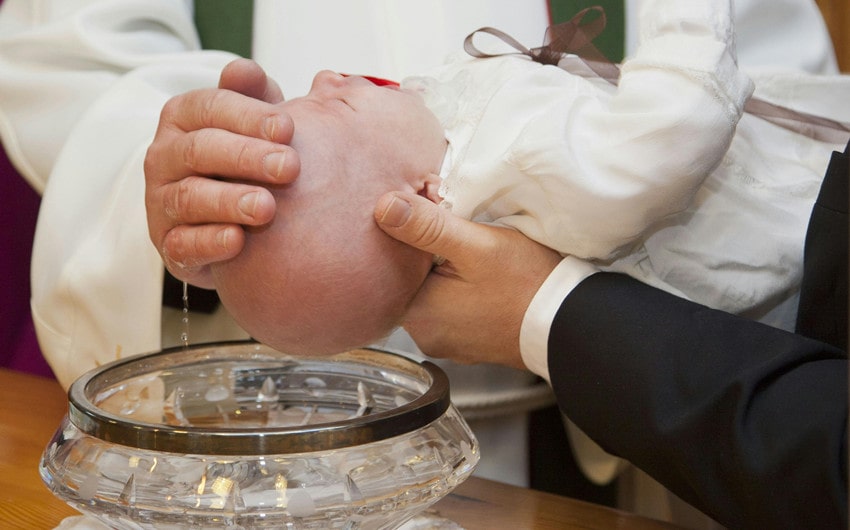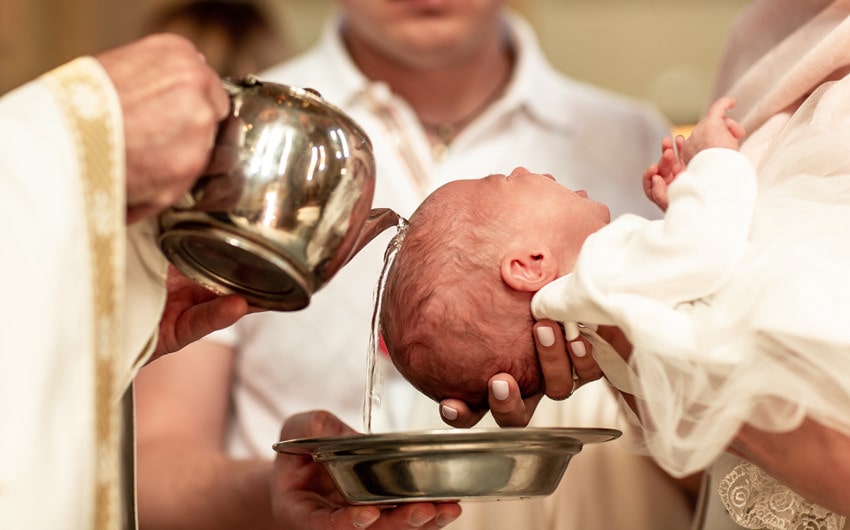What Is Baptism According to the Bible? Meaning and Importance
Baptism is a special moment for many people of faith. It marks a turning point, symbolizing a new life, cleansing, and commitment to God. But what is baptism according to the Bible? In simple terms, it’s an outward sign of inner faith, representing repentance and the decision to follow Jesus.
From Jesus’ own baptism to the early Christian church, the Bible highlights baptism as a meaningful step in one’s spiritual journey. Whether you’re curious about its significance or considering being baptized, understanding its biblical roots can help you see why it’s such a powerful expression of faith.
The Meaning of Baptism in the Bible

In the Bible, baptism holds deep symbolic meaning. It represents the washing away of sins, a fresh start, and a commitment to a new life in Christ. Baptism is often seen as a public declaration of faith, signifying a believer’s repentance and acceptance of Jesus as their Savior. This act is not just a ritual; it reflects a spiritual transformation that occurs within the individual.
The New Testament frequently links baptism with salvation, renewal, and the Holy Spirit. For example, in Romans 6:4, the apostle Paul explains that through baptism, believers are “buried with Him through baptism into death,” and just as Christ was raised from the dead, they too are raised to walk in newness of life. This means that baptism symbolizes death to an old way of living and the beginning of a new, Spirit-filled life.
In Acts 2:38, Peter instructs the crowd to “repent and be baptized, every one of you, in the name of Jesus Christ for the forgiveness of your sins. And you will receive the gift of the Holy Spirit.” Here, baptism is directly connected with repentance and receiving God’s grace through the Holy Spirit.
Furthermore, baptism serves as a powerful reminder of Christ’s own death, burial, and resurrection. By being submerged in water and then brought back up, the believer participates in a physical representation of these events, symbolizing their own spiritual rebirth and the promise of eternal life through Christ.
The Bible also presents baptism as a unifying act. In 1 Corinthians 12:13, it states, “For we were all baptized by one Spirit so as to form one body.” Baptism brings individuals into the body of Christ, emphasizing their connection to the larger Christian community.
In essence, the meaning of baptism in the Bible goes beyond mere symbolism. It reflects a profound spiritual reality of forgiveness, transformation, and unity, marking a critical step in the faith journey of a believer.
Biblical Origins of Baptism
Baptism in the Bible has deep roots, drawing from Old Testament purification rituals and becoming a central Christian practice in the New Testament. Here’s a concise overview of its origins:
Old Testament Roots
Though baptism itself is not explicitly mentioned in the Old Testament, the concept of ritual cleansing with water was a common practice among the Israelites. These water rites were used to purify individuals from sin or ritual impurity. For example, priests were required to wash with water before entering the temple (Leviticus 16:4).
This act of cleansing symbolized the removal of impurity and laid the foundation for the use of water in New Testament baptism. Prophecies, such as in Ezekiel 36:25, also hinted at a future time of spiritual cleansing: “I will sprinkle clean water on you, and you will be clean.” This foreshadowed the spiritual renewal symbolized by baptism in the New Testament.
John the Baptist’s Role
John the Baptist marks the transition from Old Testament purification practices to the New Testament concept of baptism. His ministry revolved around calling people to repentance in preparation for the coming of the Messiah. John baptized people in the Jordan River, symbolizing their repentance and readiness for the kingdom of God.
In Matthew 3:11, John makes a clear distinction between his baptism of water and the more powerful baptism that would come through Jesus, saying, “I baptize you with water for repentance, but after me comes one who is more powerful… He will baptize you with the Holy Spirit and fire.” John’s role as the forerunner of Christ prepared the way for Christian baptism, which would soon take on a fuller spiritual meaning.
Jesus’ Baptism: A Turning Point
The baptism of Jesus by John in the Jordan River is a pivotal event in the New Testament. Though Jesus was without sin, he chose to be baptized to “fulfill all righteousness” (Matthew 3:15). This act served multiple purposes: it affirmed John’s ministry, set an example for believers, and marked the beginning of Jesus’ public ministry.
During his baptism, the Holy Spirit descended upon Jesus in the form of a dove, and God’s voice declared, “This is my Son, whom I love; with him I am well pleased” (Matthew 3:17). This moment revealed the importance of baptism not only as an act of obedience but also as a divine affirmation of faith.
Baptism in the Early Church
After Jesus’ resurrection, baptism became an essential practice in the early Christian community. In the Book of Acts, baptism was closely linked with the message of salvation and the gift of the Holy Spirit. Peter’s message on the Day of Pentecost called people to “Repent and be baptized, every one of you, in the name of Jesus Christ for the forgiveness of your sins. And you will receive the gift of the Holy Spirit” (Acts 2:38).
In this context, baptism symbolized not only repentance but also the believer’s union with Christ in his death, burial, and resurrection. Romans 6:3-4 further emphasizes this, stating that through baptism, believers participate in Christ’s death and are raised to “walk in newness of life.” In the early church, baptism was the gateway to joining the Christian community and marked the beginning of a new spiritual life.
The Great Commission
The importance of baptism was solidified by Jesus in the Great Commission, where he commanded his disciples to make disciples of all nations, “baptizing them in the name of the Father and of the Son and of the Holy Spirit” (Matthew 28:19). This command underscores the central role of baptism in the life of every believer as a public declaration of faith and a vital step in becoming a disciple of Christ.
In summary, the biblical origins of baptism can be traced back to Old Testament purification rituals, brought into greater focus through the ministry of John the Baptist, and given profound spiritual significance through Jesus’ own baptism and the practices of the early church. Baptism evolved into a central Christian rite, symbolizing spiritual renewal, unity with Christ, and obedience to the commands of Jesus.
Why is Baptism Important According to the Bible?

Baptism holds profound importance in the Bible, not only as a symbolic act but also as a commandment from Jesus Christ and an integral part of Christian faith. Here’s why baptism is emphasized in biblical teachings:
1. A Command from Jesus
One of the primary reasons baptism is important according to the Bible is that Jesus himself commanded it. In the Great Commission (Matthew 28:19), Jesus instructed his disciples to “make disciples of all nations, baptizing them in the name of the Father and of the Son and of the Holy Spirit.” This directive places baptism as a central part of Christian discipleship, making it an essential step for believers who wish to follow Jesus.
Jesus’ own baptism by John also sets an example for all believers (Matthew 3:13-17). While Jesus was sinless, his decision to be baptized showed obedience to God’s will, highlighting the significance of this act as part of a faithful life.
2. A Public Declaration of Faith
Baptism is a visible and public declaration of a believer’s faith in Christ. It signifies a personal decision to turn from sin and follow Jesus. By being baptized, individuals make a public statement of their commitment to live a new life, aligning themselves with the teachings of Jesus.
In Acts 2:41, we see the early Christian converts getting baptized as a way to publicly declare their belief in the gospel: “Those who accepted his message were baptized, and about three thousand were added to their number that day.”
The act of baptism also publicly connects a believer with the larger Christian community. In 1 Corinthians 12:13, Paul explains, “For we were all baptized by one Spirit so as to form one body.” Through baptism, Christians identify themselves as members of the body of Christ, uniting with other believers in the faith.
3. Symbol of Cleansing and Forgiveness
Baptism is often linked with the cleansing of sin and the gift of forgiveness. In Acts 22:16, Paul is encouraged to “Get up, be baptized and wash your sins away, calling on his name.” This verse, along with many others, connects baptism to the spiritual washing away of sins, symbolizing a fresh start with God. Baptism signifies a break from the past and a new beginning as a forgiven follower of Christ.
In 1 Peter 3:21, the apostle Peter writes that “baptism… now saves you… not as a removal of dirt from the body but as an appeal to God for a good conscience, through the resurrection of Jesus Christ.” Here, baptism is described as a step toward a clear conscience and a renewed relationship with God, made possible by Jesus’ resurrection.
4. Identification with Christ’s Death and Resurrection
Baptism is a symbolic act of identification with Jesus’ death, burial, and resurrection. Romans 6:3-4 says, “We were therefore buried with him through baptism into death in order that, just as Christ was raised from the dead through the glory of the Father, we too may live a new life.”
This passage highlights how baptism signifies the believer’s old life being “buried” in the water, just as Christ was buried, and being “raised” out of the water to a new life, just as Christ rose from the dead.
This connection to Christ’s death and resurrection is central to the meaning of baptism, as it reflects the transformation that takes place when someone becomes a follower of Christ: the old self dies, and a new, Spirit-filled life begins.
5. Receiving the Holy Spirit
Another significant reason for baptism’s importance in the Bible is its connection to the gift of the Holy Spirit. In Acts 2:38, Peter preaches, “Repent and be baptized, every one of you, in the name of Jesus Christ for the forgiveness of your sins. And you will receive the gift of the Holy Spirit.” This verse shows that baptism is tied to receiving the Holy Spirit, marking it as a moment of divine empowerment for the believer’s new spiritual journey.
Through baptism, believers not only declare their faith but also open themselves to the transformative power of the Holy Spirit, who guides, strengthens, and supports them in their walk with Christ.
Types of Baptism in the Bible
In the Bible, baptism takes on different forms, each carrying its own significance. While the most common understanding of baptism involves water, the Bible also mentions other types of baptism that are deeply spiritual in meaning.
1. Water Baptism
Water baptism is the most widely practiced form of baptism in Christianity and is the method Jesus himself underwent. This baptism typically involves full immersion in water, though some traditions use sprinkling or pouring. The act of immersion symbolizes the believer’s identification with Christ’s death (going under the water) and resurrection (coming up out of the water), as described in Romans 6:3-4.
Water baptism is seen as an outward expression of inward faith. It marks a believer’s public commitment to follow Jesus, signifies the washing away of sins, and represents spiritual cleansing. Throughout the New Testament, especially in the Book of Acts, water baptism is performed as a critical step for those who choose to follow Christ (Acts 2:41, Acts 8:36-38).
2. Baptism of the Holy Spirit
The Baptism of the Holy Spirit is distinct from water baptism, though it is often associated with the same spiritual journey. This type of baptism refers to being filled with the Holy Spirit, a transformative experience that empowers believers for ministry and a deeper relationship with God. In Acts 1:5, Jesus says, “For John baptized with water, but in a few days you will be baptized with the Holy Spirit.”
The most notable instance of the baptism of the Holy Spirit occurred on the Day of Pentecost (Acts 2:1-4), when the disciples were filled with the Holy Spirit, enabling them to speak in different languages and begin spreading the gospel. The baptism of the Holy Spirit is often seen as the moment when believers receive divine power for witnessing and living a Spirit-filled life.
3. Baptism of Fire
In the New Testament, the Baptism of Fire is mentioned by John the Baptist in Matthew 3:11: “He will baptize you with the Holy Spirit and fire.” This type of baptism is interpreted in a few ways. Some believe it refers to the purifying and refining process that believers undergo when they commit their lives to Christ, where trials and challenges help them grow spiritually (Malachi 3:2-3).
Others view it as a symbol of judgment or divine cleansing, where God’s purifying fire removes impurities and brings believers closer to spiritual maturity. Fire, in biblical terms, often represents both judgment and purification, making the baptism of fire a powerful symbol of the spiritual transformation that comes through Jesus.
4. Baptism of Suffering (or the Cup of Suffering)
Jesus also referred to a “baptism of suffering” when speaking about the trials he would endure. In Mark 10:38-39, Jesus asked James and John, “Can you drink the cup I drink or be baptized with the baptism I am baptized with?” Here, baptism refers to the suffering Jesus would face during his crucifixion.
This baptism of suffering highlights the sacrifice and challenges that come with following God’s will, reminding believers that faith may involve enduring trials for the sake of Christ.
Baptism as a Public Declaration of Faith
Baptism in the Bible is more than just a religious ritual; it is a powerful public declaration of a believer’s faith in Jesus Christ. By participating in baptism, an individual openly proclaims their decision to follow Christ and align themselves with his teachings. This act is often seen as the first step of obedience after placing one’s faith in Jesus, marking the beginning of a new spiritual life.
A Visible Expression of Inner Change
Baptism serves as a visible expression of an inward transformation. When someone becomes a Christian, they undergo a spiritual rebirth, leaving behind their old life and embracing a new identity in Christ.
Baptism symbolizes this change, as the individual is submerged in water (symbolizing the death of the old self) and then raised from the water (symbolizing new life in Christ). Romans 6:4 illustrates this: “We were therefore buried with him through baptism into death in order that, just as Christ was raised from the dead through the glory of the Father, we too may live a new life.”
This public demonstration of faith is an important step because it not only solidifies the individual’s commitment to Christ but also serves as a witness to the community. It allows others to see the believer’s transformation and encourages fellow Christians by affirming their shared faith.
A Testimony to the Community
In the Bible, baptism is often performed in public settings, emphasizing its role as a testimony to the larger community. For instance, in Acts 2:41, after Peter preached at Pentecost, about 3,000 people were baptized in one day as a public declaration of their belief in Jesus as the Messiah. This public nature of baptism reinforces the idea that faith is not something to be kept private but is meant to be shared with others.
Through baptism, believers not only testify to their personal faith but also publicly identify themselves as part of the body of Christ, joining the larger Christian community. 1 Corinthians 12:13 says, “For we were all baptized by one Spirit so as to form one body,” indicating that baptism brings believers together as members of the Church.
Baptism and Salvation in the Bible
The relationship between baptism and salvation is a key theme in the New Testament. Baptism is consistently presented as an important part of the salvation process, though theological debates exist about whether it is strictly necessary for salvation. The Bible links baptism to forgiveness of sins, a new life in Christ, and the gift of the Holy Spirit, making it a central aspect of the believer’s faith journey.
Linked to Forgiveness of Sins
In several passages, baptism is directly associated with the forgiveness of sins. For example, in Acts 2:38, Peter instructs the crowd at Pentecost to “Repent and be baptized, every one of you, in the name of Jesus Christ for the forgiveness of your sins.”
This verse ties baptism to both repentance and the cleansing of sins, highlighting its role in the process of spiritual renewal. Similarly, in Acts 22:16, Paul recounts how Ananias encouraged him to “Get up, be baptized and wash your sins away, calling on his name.”
The Bible presents baptism as a symbolic act that represents the washing away of sin, offering believers a fresh start in their relationship with God. While some Christian denominations interpret these verses as indicating that baptism is essential for salvation, others see baptism as a symbolic affirmation of faith rather than a requirement.
Identification with Christ’s Death and Resurrection
Baptism is also closely tied to the believer’s identification with Jesus’ death, burial, and resurrection. In Romans 6:3-4, Paul explains, “Or don’t you know that all of us who were baptized into Christ Jesus were baptized into his death? We were therefore buried with him through baptism into death, in order that, just as Christ was raised from the dead through the glory of the Father, we too may live a new life.”
This passage shows that baptism is more than just a ritual; it is an act of faith in which believers spiritually participate in Christ’s death and resurrection.
By being immersed in water, believers symbolically die to their old selves, and as they rise from the water, they are resurrected into a new life in Christ. This deep connection between baptism and Christ’s redemptive work reinforces the idea that baptism represents the believer’s entry into a new, transformed life.
The Role of Baptism in Salvation
While the Bible makes clear that baptism is an important part of the faith journey, theological debates exist around its necessity for salvation. Some Christian traditions, such as the Roman Catholic Church and certain Protestant denominations, believe that baptism is a sacrament that plays an essential role in salvation.
Others, particularly in Evangelical traditions, view baptism as an outward sign of an inward faith and emphasize that faith in Jesus, rather than the act of baptism itself, is what brings salvation.
For example, Mark 16:16 states, “Whoever believes and is baptized will be saved, but whoever does not believe will be condemned.” This suggests that belief is primary for salvation, with baptism following as a confirming act of faith. In contrast, passages like 1 Peter 3:21 present baptism as a means of appealing to God for a good conscience, rather than as the literal act that saves.
Ultimately, the Bible portrays baptism as a powerful act of obedience and faith, but its exact role in salvation may be understood differently depending on one’s theological perspective.
How Baptism is Practiced in the Bible

The Bible provides multiple examples of how baptism was practiced in the early church, offering insights into its method, meaning, and significance. While the core elements of baptism involve water and the name of Jesus Christ, there are variations in how it is performed.
Baptism by Immersion
The most common method of baptism mentioned in the Bible is immersion in water. The Greek word for baptism, baptizo, literally means “to dip” or “to immerse,” which suggests that early baptisms were likely performed by fully submerging the person in water.
This is evident in several New Testament passages, including the baptism of Jesus. In Matthew 3:16, it says, “As soon as Jesus was baptized, he went up out of the water.” This implies that Jesus had been fully submerged in the Jordan River.
Similarly, in Acts 8:38-39, when Philip baptizes the Ethiopian eunuch, they both go down into the water, and afterward, they come up out of it, indicating immersion. Immersion baptism symbolizes the believer’s death to sin and resurrection to new life, providing a physical representation of the spiritual transformation that takes place.
Baptism by Sprinkling or Pouring
While immersion is the most common method mentioned, the Bible does not provide strict instructions on the mode of baptism. Some Christian traditions practice baptism by sprinkling or pouring water over the individual, especially when immersion is not practical. This form of baptism is often used for infants or in situations where immersion is not feasible.
The key element in baptism is not the method but the meaning behind it: the washing away of sin and the individual’s commitment to follow Christ. Whether through immersion or sprinkling, the act of baptism symbolizes the believer’s entry into the Christian faith and community.
The Trinitarian Formula
In Matthew 28:19, Jesus commands his disciples to baptize “in the name of the Father and of the Son and of the Holy Spirit.” This formula, known as the Trinitarian baptism, became the standard in Christian baptismal practices. The use of the Trinity underscores the belief that baptism is not just an individual act, but one that involves all three persons of the Godhead, representing the fullness of the believer’s relationship with God.
In contrast, some passages in Acts (Acts 2:38, 19:5) describe believers being baptized “in the name of Jesus Christ,” which has led some Christian groups to use this shorter formula. However, both forms emphasize the believer’s connection to the work of Christ and the transformative power of the Holy Spirit.
Baptism in the Early Church
In the early church, baptism quickly became an essential practice for those who placed their faith in Christ. Following the example of Jesus and the teachings of the apostles, the early Christians viewed baptism as a vital part of their faith journey. Baptism was seen as the moment when a believer publicly confessed their faith, received the Holy Spirit, and entered into the community of believers.
Baptism in the Book of Acts
The Book of Acts provides numerous examples of how baptism was practiced in the early church. One of the most notable is Peter’s call to baptism in Acts 2:38, where he instructs the crowd at Pentecost to “Repent and be baptized, every one of you, in the name of Jesus Christ for the forgiveness of your sins.” This call resulted in 3,000 people being baptized in a single day (Acts 2:41), marking the rapid growth of the early Christian community.
Other examples in Acts show that baptism was often performed immediately after someone placed their faith in Christ. In Acts 8:36-38, Philip baptizes the Ethiopian eunuch as soon as the man believes, demonstrating the urgency and importance placed on baptism in the early church. Similarly, in Acts 16:33, the Philippian jailer and his household are baptized the same night they believe in Jesus.
Baptism as a Gateway to Christian Community
For the early church, baptism was more than a personal spiritual experience; it was the entry point into the Christian community. Baptism marked a person’s inclusion in the body of Christ and symbolized their commitment to living as part of the church. In 1 Corinthians 12:13, Paul explains, “For we were all baptized by one Spirit so as to form one body,” highlighting the unifying nature of baptism.
This communal aspect of baptism was important because it affirmed that faith was not meant to be lived in isolation. Instead, believers were baptized into a shared faith, becoming part of the larger body of Christ and committing to support and grow with one another.
Theological Development of Baptism in the Early Church
As Christianity spread, the early church developed more formalized teachings on baptism. By the second and third centuries, baptism was commonly seen as necessary for salvation, and the practice of infant baptism began to emerge in some Christian communities.
While the New Testament primarily records the baptism of adults who made conscious decisions to follow Christ, the early church recognized the significance of baptism for all, including infants, as a means of introducing them into the faith community.
Baptism was also closely tied to the reception of the Holy Spirit. Early Christian writings suggest that baptism was followed by the laying on of hands, through which the baptized received the Holy Spirit. This practice emphasized that baptism was not merely a symbolic act, but one in which God’s Spirit was imparted to the believer, empowering them for their new life in Christ.







